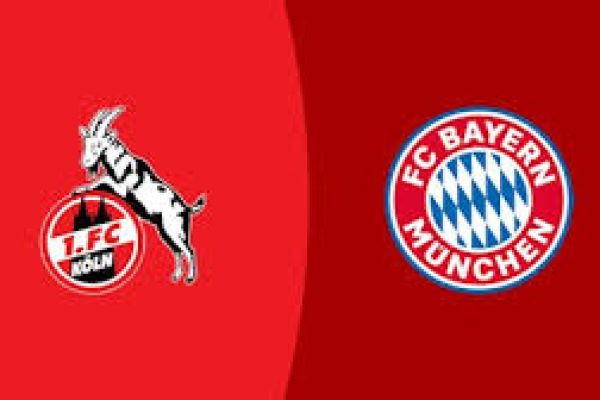This Bundesliga fixture typically pits two starkly contrasting tactical philosophies against each other: the relentless, dominant possession-based attack of FC Bayern Munich against the rigid, resilient, and often desperate low block of 1. FC Köln. While the narratives often focus on the difference in quality, the tactical setup employed by the Geißböcke determines whether this match is a procession or a genuine challenge.
FC Bayern Munich: Relentless Offensive Structure
Bayern, under their current management, consistently employs a dominant 4-2-3-1 formation, which fluidly transforms into a 3-2-5 or 2-3-5 in the attacking phase. Their primary objective is occupation and overload, aiming to create high-quality chances through sustained pressure.
The Attack Triangle: Kane, Wingers, and Half-Spaces
The offensive structure revolves around the focal point, Harry Kane, whose ability to drop deep, link play, and execute world-class finishing from various angles is central. The wingers (often Leroy Sané and Kingsley Coman/Jamal Musiala) stretch the play wide but are constantly looking for opportunities to cut into the half-spaces—the channels between the opponent's center-back and full-back.
Midfield Link: The double pivot (Joshua Kimmich and Leon Goretzka/Konrad Laimer) acts as the engine room. Kimmich provides deep playmaking, distributing long diagonal passes to switch play or sharp, quick passes to break the lines.
High Press and Counter-Press: Defensively, Bayern uses an aggressive high block, aiming to win the ball back within six seconds of losing it (the gegenpress). This forces opposition defenses into hurried, inaccurate long balls, allowing Bayern's defenders to reset the attack quickly.
Vulnerability: Bayern’s high defensive line, a necessary component of their press, remains their greatest tactical risk. Teams that can bypass the initial midfield wave with fast, vertical passes or quick dribbles can find massive space behind the center-backs, especially when the fullbacks are pushed high up the pitch.
1. FC Köln: Resilience and Transitional Threat
Köln’s approach, particularly against top-tier opposition, is defined by tactical pragmatism. They often set up in a defensive 4-4-2 or 4-1-4-1 to ensure maximum compactness and defensive solidity. Against Bayern, the focus is almost entirely on two phases: denying space and maximizing the few moments of transition.
The Low Block Strategy
Köln will look to establish a deep, narrow low block, positioning their lines close together (the second line of defense). The goal is not to win the ball high, but to frustrate Bayern by forcing them into inaccurate long-range shots or low-percentage crosses.
Central Congestion: Their central midfielders will be tasked with shadowing Kimmich and disrupting the central supply lines to Kane and Musiala. They must prevent Bayern from establishing a rhythm in Zone 14 (the central area just outside the box).
The Counter-Attack: Any possession gained is a potential opportunity. Köln's success in transition depends on one or two dedicated attackers (often fast wingers or a target man) who can hold up the ball and wait for the support runners from midfield. The ball must move vertically and quickly to exploit the space left by Bayern's high fullbacks before they can recover. Set pieces also represent a crucial, high-leverage scoring opportunity for Köln.
Key Tactical Matchups
The outcome of the match will likely be decided by three critical head-to-head tactical duels:
1. The Central Overload: Bayern's Pivot vs. Köln's Double-Six
Can Köln's central midfield duo maintain discipline and physically challenge Bayern’s double pivot? If Kimmich is allowed time and space to dictate play, Bayern will slice through the defense relentlessly. Köln must press Kimmich every time the ball is played to him, even if it means sacrificing an extra midfielder deeper to create the necessary numerical advantage.
2. The Winger-Fullback Dual
The isolation of Bayern's wingers against Köln's fullbacks is a persistent threat. If Sané and Musiala can successfully receive the ball with space in the wide areas, the fullbacks must rely on immediate support from their nearest center-back or central midfielder to create a 2v1 advantage. If Köln's fullbacks are left isolated, Bayern will leverage their pace and dribbling ability for penetrative crosses or shots on goal.
3. Exploiting the High Line
The most high-risk, high-reward strategy for Köln is the direct counter-attack. A decisive moment will occur immediately after a Bayern turnover. Can Köln's attackers receive a long, aerial ball in stride, forcing Bayern's center-backs (Upamecano/De Ligt) into a footrace toward their own goal? Executing this transition flawlessly is their clearest path to scoring.
Conclusion
Tactically, this match is a blueprint of the modern Bundesliga disparity. While Köln’s organization and resolve will provide initial resistance, Bayern’s wealth of individual quality and structured attacking scheme are expected to prevail. The key for Bayern is patience and relentless switching of play to tire the rigid Köln defense. For Köln, surviving the first hour and capitalizing on Bayern’s high-line vulnerability in a single, clinical moment of transition is their only realistic path to an upset. Expect a tight, attritional first half, with Bayern finding the necessary breakthroughs in the second.








